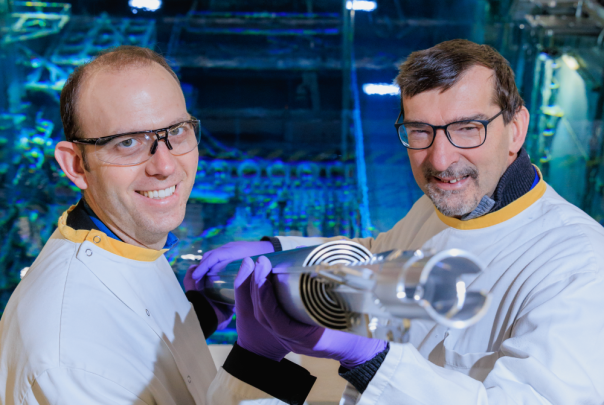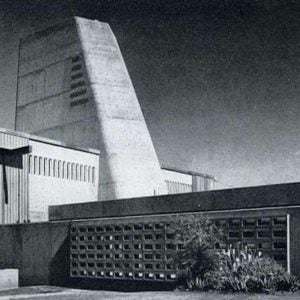 BR2 is one of the most powerful research reactors in the world contributing significantly to the global supply of medical radioisotopes and testing nuclear innovations. Since it began operating in 1962, it has been fuelled by highly enriched uranium (HEU), considered a nuclear proliferation risk. Belgium’s nuclear research centre, SCK-CEN, plans to replace this with low-enriched uranium (LEU).
BR2 is one of the most powerful research reactors in the world contributing significantly to the global supply of medical radioisotopes and testing nuclear innovations. Since it began operating in 1962, it has been fuelled by highly enriched uranium (HEU), considered a nuclear proliferation risk. Belgium’s nuclear research centre, SCK-CEN, plans to replace this with low-enriched uranium (LEU).
In collaboration with the USA, SCK-CEN is developing a completely new fuel type. However, switching to this fuel requires extensive testing and the preparation of a significant safety file. SCK CEN will have to prove to the Federal Agency for Nuclear Control (FANC that the new fuel is just as safe as the current one. Moreover, the research reactor must also deliver the same technical performance using this new fuel.
“Over the last two BR2 cycles we tested three low-enriched fuel assemblies in real conditions,” says project manager Jared Wight. A new hurdle in the demonstration process has now been cleared. After each cycle, each fuel assembly is and these have so far shown that the assemblies remained perfectly undamaged, even under high power. SCK CEN’s target is to convert the reactor to LEU by 2026. “In highly enriched uranium, we can split almost all uranium atoms.
In low-enriched uranium, only one atom in five is fissile,” Wight explains. “However, the nuclear fuel must be able to perform to the same level, so that BR2 can perform its vital missions. It’s like a driver filling their car’s tank with 20% petrol, and still wanting to travel the same distance at the same speed as they would on a full tank”
BR2 reactor manager Steven Van Dyck notes that BR2 will be the world’s first high-performance research reactor converted from HEU to LEU fuel. The US Department of Energy’s National Nuclear Security Administration (NNSA) says SCK-CEN’s successful completion of the second irradiation cycle using LEU is a major milestone and a crucial step toward the conversion of BR2 by 2026. “Their progress sets a global example for reactor conversions to low-enriched uranium and demonstrates our ability to achieve non-proliferation goals while maintaining scientific excellence”, notes Corey Hinderstein, NNSA Deputy Administrator for Defense Nuclear Non-proliferation.
“The long-standing US-Belgium partnership on nuclear research will also allow us and the world to address the many challenges of our times, including climate change, medical advances, energy transition, and non-proliferation. Together, we can build a more sustainable and secure future,” comments Michael M Adler, US Ambassador to Belgium.
The BR2 accounts for about a quarter of the global production of radioisotopes for medicine and industry, including for cancer therapy and medical imaging. It also produces doped silicon, which forms a semiconductor material that provides the basic substance for electronic components.
Most of the world's research reactors were built in the 1960s and 1970s using technology that required HEU – with enrichment levels as high as 98% – to perform experiments. HEU targets have also been used in the production of medical radioisotopes. According to the International Atomic Energy Agency (IAEA), some 220 research reactors are in operation in 53 countries, and 171 of these were constructed with an HEU core. Since 1978, 71 HEU fuel reactors have been converted to LEU. IAEA has supported HEU to LEU fuel conversions or HEU repatriations in Austria, Bulgaria, Chile, China, the Czech Republic, Georgia, Ghana, Hungary, Jamaica, Kazakhstan, Latvia, Libya, Mexico, Nigeria, Poland, Portugal, Romania, Serbia, Ukraine, Uzbekistan and Viet Nam.
Although 71 research reactors have been converted to LEU, and 28 that were fuelled with HEU have been shut down, over 70 still use HEU, mostly for scientific reasons. These include high performance research reactors such as BR2.
Image: An LEU test assembly for the BR2 research reactor (courtesy of SCK-CEN)






